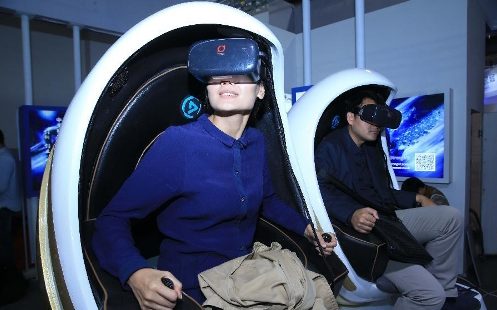Forgive the people of China for their lack of fealty to reality after a dizzying 25 years of transformation. The breakneck pace of urbanization and industrialization must have often seemed shockingly otherworldly, and the same could be said of problems attendant to the big switch: the world’s highest cancer rates and worst air pollution. Maybe some citizens need a break from their vertiginous world.
Or perhaps China is leading the world in early adoption of VR technologies more practical reasons. The real estate boom on the mainland and the new money that allows Chinese people to buy overseas has popularized the use of Virtual Reality goggles that allow potential buyers to “take a tour” of a property from afar–or one yet to be built–normalizing the professional use of the tool. This utilization of the technology may provide the country with a foundational advantage in future uses of VR. That’s a possibility, though an early lead can disappear in a hurry as gadgets become cheaper and better.
From the Economist:
In the West the interest in VR has mainly focused on consumer applications like gaming. By contrast, in China business applications are an immediate and profitable avenue for growth. Property developers like Vanke are using VR to peddle expensive properties that are overseas or not yet built, and architects are using it in design. Education is another promising field. NetDragon, a Chinese software firm that attracted attention when it acquired Britain’s Promethean World, an online education outfit, for some $100m last year, is testing how VR software and hardware can be used in mainland schools (one idea is that headsets could tell when children are tilting their heads, indicating boredom, meaning a change of subject or teaching method is required).
Companies specialising in VR are spending a great deal of time examining the growth in China’s market. In addition to the quick adoption by Chinese businesses, this is for two other reasons to do with the consumer side, reckons Huang Zhuang, founder of China’s Nao Chuan Yue, a startup VR outfit. First, mainlanders are enthusiastic early adopters of whizzy technologies, even if the early versions are somewhat imperfect. Second, China leads the world in the use of the mobile internet. Mr Huang is convinced that the majority of users in future will access VR via their web-connected smartphones, not via goggles attached to personal computers or self-contained devices.
In other countries, including America, it is difficult for people to try out VR technology, notes Ryan Wang of Outpost Capital, a Californian venture-capital firm with investments in the sector. They have to fork out $1,000 or more to experience high-end VR. That means there is as yet no clear, affordable path for American consumers to adopt the technology, says Mr Wang.
China, on the other hand, already has a full infrastructure in place for consumers to try it out.•

